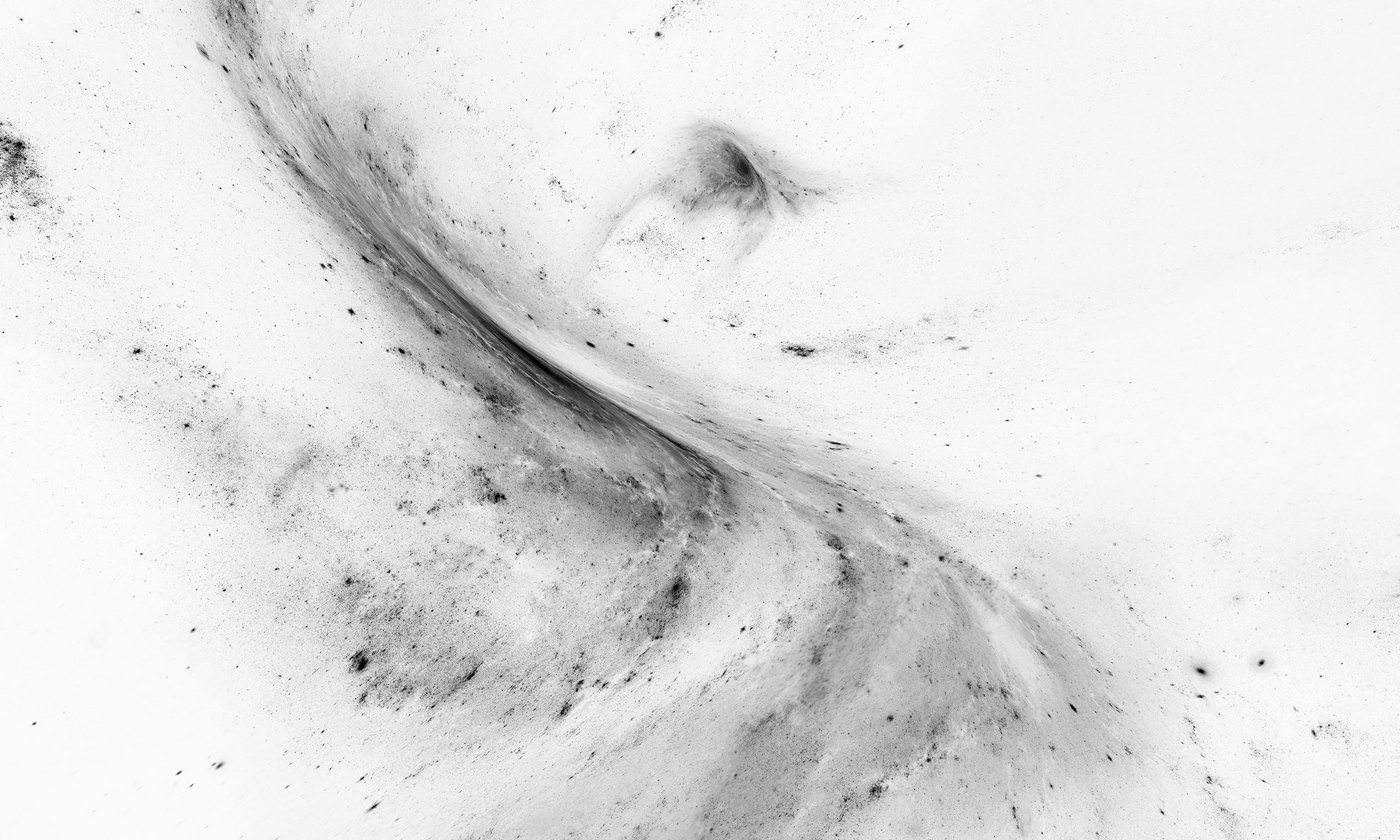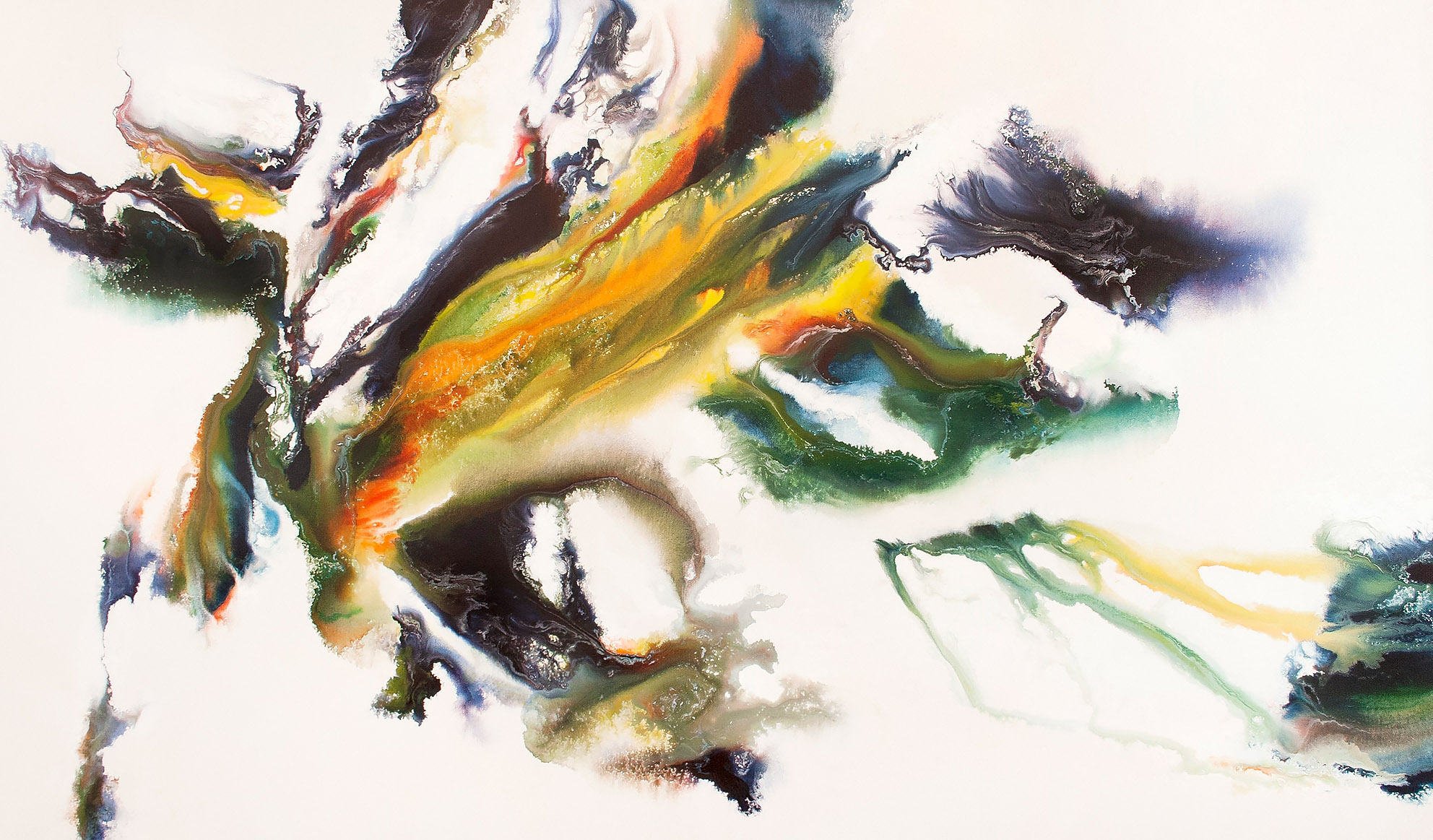Minute Landscapes, Immense Landscapes – Manoel Veiga’s poetic project
by Agnaldo Farias
(translated from Portuguese by Beatriz Viégas-Faria)
As printed on the folder for Veiga’s solo exhibition at the Mezanino Art Gallery, São Paulo, 2015.
It is intriguing to think that while we go on living submerged in our predictable and generic daily lives, we are oblivious of simultaneous events – whether near to us or far from us, – with the exception of those which, notwithstanding our will and desire, are churned out by the media. We don’t think of what is happening now, and we will almost never aim at knowing what happens outside the orbit of our more immediate interests, firstly because we cannot possibly retain the amplitude of any given set of each and every item that (apparently, at least) is bound to share our space and time. As Brazilian poet Carlos Drummond de Andrade wrote in his poem Mundo Grande [Big World], clearly concerned with tackling the amplitude of events in our world and aware of having failed his intent,
Não, meu coração não é maior que o mundo.
É muito menor.
Nele não cabem nem as minhas dores.
[...]
Sim, meu coração é muito pequeno.
Só agora vejo que nele não cabem os homens.
Os homens estão cá fora, estão na rua.
A rua é enorme. Maior, muito maior do que eu esperava.
Mas também na rua não cabe todos os homens.
A rua é menor que o mundo.
O mundo é grande.
No, my heart is no larger than the world.
It is much smaller.
In it not even my heartaches will fit.
[…]
Yes, my heart is very small.
It is only now I see that in it mankind won’t fit.
People are out here, on the street.
The street is huge. Larger, much larger than I expected.
And yet, even on the street, mankind won’t fit.
The street is smaller than the world.
The world is big.
And what is one to say then of events in astronomical scale, or of images that we see arriving to us from stars that no longer exist, whose beams of light were issued millions of light-years away from us? What do we make of the sudden awareness that the universe is expanding? And that we are, by force of gravity, stuck on a planet that is not only minuscule but rotates about its axis at a vertiginous speed of 1,675 km/hour and moves around the sun at 107,000 km/hour – meaning it does so at a low speed when compared to the speed of galactic rotation, which is 810,000 km/hour, – all of which takes place inside the Milky Way, on a collision course with the Andromeda galaxy at a speed of 230,000 km/hour? What is one to say? Well, nothing. It seems all so distant, so absurd to our ridiculously petty grasp of things that it is not worth the while thinking about it. The same goes for the so-called minute, microscopic processes. (Do you remember when, at some moment in your childhood, you learned that the human body is 70% water?) What about bacteria, cells, molecules, atoms, particles, and all of the endless types of matter that, according to what we were recently told, is actually energy so incomprehensibly cohesive that gives body to each and every thing?
Maybe it is that little, or seldom, or never we think about topics of such nature because they resist to giving us an approximate measure of our own importance – which is not much beyond zero. Unpleasant, right? Realizations of this kind will reduce to dust our belief in ourselves as individuals; and the excessive value given to our own egos today and the irrelevance of the news issued about ourselves on the social networks are the pathetic evidence of our want of compensation.
Nonetheless, there is a lot of people busy with probing the invisible, carrying out research work, surveying, expanding by now the unanimous and already ancient realization that time is not absolute, for it changes in consonance with space as a result of the effects of gravity that physically alter them both, and this allows us to think about the existence of other spaces and times, simultaneous to the space and time we inhabit.
Among the various persons that devote themselves to such topics, in the forefront there are those who work as scientists and those who work as artists (we will not take into consideration here the religious persons, for they believe way too much. Scientists and artists are believers too, of course, but of a different sort, given they are open to other possibilities). Lots of people study the occult, whether it be in minute or immense regions, or even in another dimension. Manoel Veiga, for instance, is one of these people, and in this new exhibition of his, we are presented with his more recent paintings and photographs, the result of his studies of the minute and the immense, displaying an exquisite understanding of a poetic project that comprehends paintings and photographs without ever sliding into nostalgic detours or self-worshipping exercises – apparently a must these days.
This may sound farfetched, but one could toy with the idea of classifying Manoel Veiga’s production within the genre “landscapes.” In order to do that, we should start by observing its double provenance: in the case of his photographs, note Veiga’s appropriation of images from space as produced by a space telescope; in the case of the paintings, note the results of his particular action in catalyzing physical-chemical processes, thus creating a surface synonymous with a field where the pigments, instead of being applied – in accordance with painting’s traditional protocol, – undergo changes in their structure that were previously calculated.
Let us start with the photographs that comprise a series that is part of a work-in-progress entitled Hubble, the very name of their source, i.e., the gigantic telescope that orbits our planet and, free from all atmospheric pollution, “sees” the space with more sharpness than all telescopes that work grounded on the earth. But what exactly does Hubble see? This is the crux of the matter. Hubble’s eyes are not our human eyes, they do not see in the same way we do. The purpose of this highly advanced high-technology optical device launched into space in 1990 is to better the visibility of certain processes – particularly, in Hubble’s case, the apprehension of visible light and especially of the infrared light that stars, among other celestial bodies from outer space, issue at wave lengths ranging from 3 to 180 micrometers (1 micrometer equals 1 millionth part of a meter). Infrared light is invisible to our human eyes and is blocked by the earth’s atmosphere. Why are we interested in capturing infrared radiation? Because we want to analyze the heterogeneity of outer space, whose clouds of gas and “dusts” of various natures obstruct visible light. The infrared light passes through these obstacles, thus allowing access to the more remote regions.
In the same way that our brains “read” the frequencies that reach our eyes, the Hubble, like other telescopes and radio telescopes, converts into graphics and ciphers whatever it manages to capture from its contemplation of the space. One should bear in mind, though, that the recording of images today (either by your iPhone or the Hubble) is digital, that is, light is captured by a traditional optical device (lenses), and only then it is impelled into the digital sensors – the generators of a computer file that will automatically be analyzed by a computer software.
In a poetic reconfiguration created by digital means in a computer, Manoel Veiga takes some of the images produced by the Hubble and available to be accessed at NASA’s website to generate other, derived images. From this point of view, Veiga is working in the same way the space telescope works; but in practice, his images belong to impossible spaces that little (or nothing) resemble the space of the real world from where the images as captured by the Hubble originate. What the Hubble’s images and Veiga’s images will have in common, though, is the fact that they are, after all, representations. When we consider the space produced by the artist, his landscape originates from distorted relations of cause and effect which are clearly absurd according to scientific parameters. It is a strategy of digital technology to designate different colors to certain chemical elements in order to better differentiate them on a given image. In a homologous manner, the artist changes into black and white the derived image and subsequently inverts it, thus securing the appearance of a photographic negative. With such procedures, Veiga presents us with this intersection of photography and drawing plus etched printing. Moreover, he defines a contraposition of (i) techniques that derive from high technology – the Hubble and the computer, and (ii) a most patient “carpentry,” so characteristic of works born within the tradition of craftsmanship.
While the photographs refer to fractions of outer space, the landscapes produced by twisting such panoramic views as captured by a space telescope, Manoel Veiga’s painting plunges deeper and deeper into producing landscapes that (if they are not microscopic) are brought about by the catalysis of microscopic elements.
As the artist himself describes, “The paintings are made on the floor… The process begins with the preparation of a careful mixture of different colours… unique and very fluid and which initially presents a single complex colour... Next I attack the canvas with a brush that hardly touches it... I start to accompany the paint drying, interfering at certain times... just spraying water from a distance, in order to create gradients of concentration that will be responsible for displacing the pigments… the lighter pigments are more easily swept by the force of diffusion and are separated from the heavier pigments.”
The language employed in this excerpt reveals Veiga’s firm knowledge of concepts as studied in Fluid Mechanics – the engineer informing the artist, enabling him to apply the understanding of phenomena from Elementary Physics to designing tools for his landscape construction. The idea of catalyzing the process of separating pigments by means of a premeditated, systematic and controlled spraying of water (the ultimate solvent of acrylic paint) means that processes are triggered and speeded up that would otherwise have remained dormant, latent. This means, therefore, the production of different instances of time. Just as in his photographs Manoel Veiga busies himself with the fabrication of space, in his current paintings, resulting from several years of a time-consuming and labor-intensive research work that is certainly unparalleled in our milieu, the artist produces time and space, landscapes constructed with the manipulation of tangible, albeit invisible elements. Free of metaphorical features – a recurring aspect present in most paintings produced in our milieu, – Manoel Veiga's landscapes are brought to light from minute, microscopic, real implosions.


